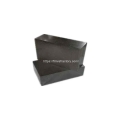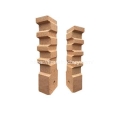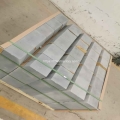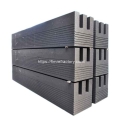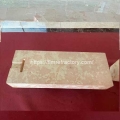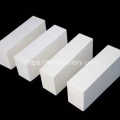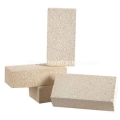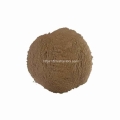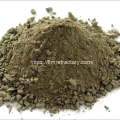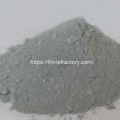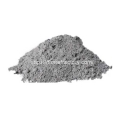- Performance. Innovation. Worldwide. Your trustworthy Refractories Manufacturing Partner--Fireramo
- +86 175 3769 7777
Contact
Contact us on WhatsApp
High Quality Refractory Bricks
Insulation Bricks for Sale
Monolithic Refractory
Sequence and method of glass kiln masonry
Glass kiln is a melting device used to produce glass, usually consists of refractory materials, steel structure, transmission, combustion system, control system, etc. Fireramo has sorted out the refractory materials used for glass kiln building, and today we have sorted out the basic introduction of glass kiln, types of glass kiln as well as the masonry sequence and method of glass kiln building.
What is a glass kiln? Melting device for glass production
Glass kiln is a common kind of glass melting kiln, because the matching material in this kind of kiln’s trough-shaped pool is melted into glass liquid, so the name kiln.
The working principle of a glass furnace is that the glass raw materials (such as quartz sand, sodium carbonate, etc.) are put into the kiln and heated at high temperatures so that the raw materials are melted into liquid glass. Typically, glass furnaces can reach temperatures of hundreds of degrees Celsius to over a thousand degrees Celsius to ensure that the raw materials are completely melted.

Types of Glass Furnaces
Types of glass furnaces can be categorized according to the glass product manufactured, the molding method, the heat source used to melt the glass and the continuity of the melting process.
According to the manufactured products can be divided into flat glass kiln and daily glass kiln; according to the molding method can be divided into float glass kiln and flat glass kiln;
According to the heat source used for melting glass can be divided into flame kiln, electric kiln and flame electric kiln. They are respectively burning fuel as a source of heat energy, electric energy as a source of heat energy and a combination of fuel and electric energy as a source of heat energy.
According to the continuity of the melting process can also be divided into indirect kilns and continuous kilns. Intermittent kiln, the various stages of glass melting in the kiln at different times in the same part of the kiln sequentially, the kiln temperature regime is variable; continuous kiln, the various stages of glass melting in the kiln at the same time in the kiln in different parts of the kiln sequentially, the kiln temperature regime is stable.
According to different production processes and capacity requirements, the glass kiln can also be divided into a single basket glass firing kiln, multi-basket glass firing kiln, hanging glass firing kiln, melting glass furnace, physical oxidation glass furnace and other types.
Masonry sequence of glass kiln
Due to the special nature of glass kiln work, a wide variety of refractory bricks and refractory materials are used to build glass kilns. With the refractory materials for glass kilns, you can choose the most suitable refractory materials for your glass kiln.
Acceptance of pool bottom and discharge opening
On the basis of acceptance of the steel structure at the bottom of the pool, the center line of each drawing funnel plate on the kiln construction datum line and the center line of the kiln is put out according to the relevant feeding port, front and rear rows of bulging bubbles and molding access.
Pool bottom masonry, including the bottom of the access road.
After laying insulation bricks and clay bricks, inside and outside the masonry pool wall is 30-50mm wide leveling. Multi-storey type subterranean structure in the masonry must be in accordance with the elevation of the negative deviation control, the total thickness of the pool bottom of the permissible deviation is generally -3mm. in the bottom of the pool kaolin clay bricks above a layer of chromium pounding material as a sealing layer, can prevent the glass liquid infiltration to the corrosion-resistant poor clay brick layer.
Pool wall masonry, including access to the pool wall.
Masonry pool wall of the bottom of the brick must ensure the level, otherwise to the bottom of the part of the brick processing, until it meets the requirements. Multi-layer pool wall brick masonry, first after the field operation, to ensure that the size of the hearth, is strictly prohibited brick cutting surface toward the hearth. Wall corners need to be staggered pressure seam masonry, strictly maintain verticality.
Lifting columns.
Take temporary measures to stabilize the column, and then install the ballast angle according to the design requirements, the column and the ballast angle must be close to each other, at the same time set the standard elevation.
Masonry big swan.
Produces the swan tire, after the arch frame does the bearing settlement test and the corresponding size check, the big swan from both sides at the same time to the center of the masonry, and asks for the continuous operation, the big swan heat preservation layer construction to be roasts the kiln to carry on after the end.
Masonry chest wall, front wall, back wall and access to the flame space.
The masonry of the breast wall should be carried out after carefully checking the installation of brackets, buttresses and support frames. Masonry hook bricks and chest wall bricks should have to take measures to prevent dumping into the kiln.
Masonry flue and chimney.
Must be removed from the kiln debris, and vacuum cleaner for masonry. Kiln flue and chimney masonry, but also with the metal heat exchanger, access to the chimney must wait for the access masonry is completed before masonry.
Refractory bricks for glass kiln masonry






Masonry method of glass kiln
Dry masonry parts
Melting section and access to the bottom of the pool, pool walls, flame space parts of the hook brick, melting section and flue of the swan-swan brick, electrofusion brick masonry and access to the roof brick.
Wet masonry
Flame space of the melting part of the side wall and the top of the swan, flue, chimney and kiln insulation layer bricks, the mud used in wet masonry should be based on the refractory bricks used in the preparation of the corresponding refractory mud.
Specializing in refractory materials for over 20 years, we provide professional refractory solutions for the global high temperature industry.
Related Posts:
- Causes and solutions to cracking of castables after baking
- Enhancing the Medium Temperature Strength of Refractory Castables
- Ways to ensure the accuracy of refractory brick acceptance results
- Acceptance inspection after cement kiln construction
- Three Common Ways of Damage to the Sliding Nozzle for Ladles
Theme By Fireramo
